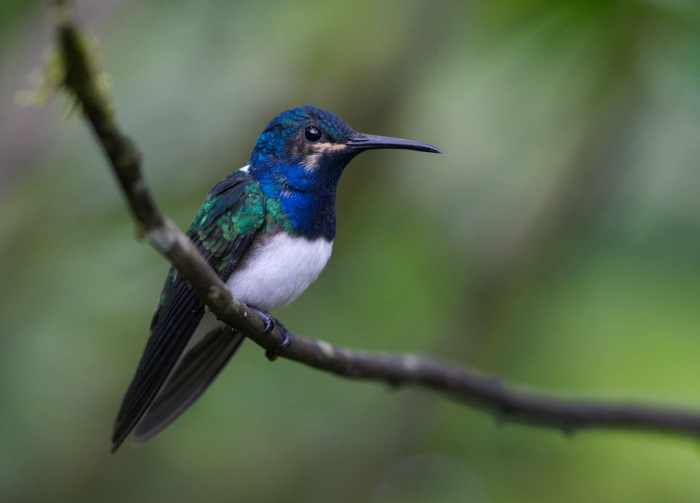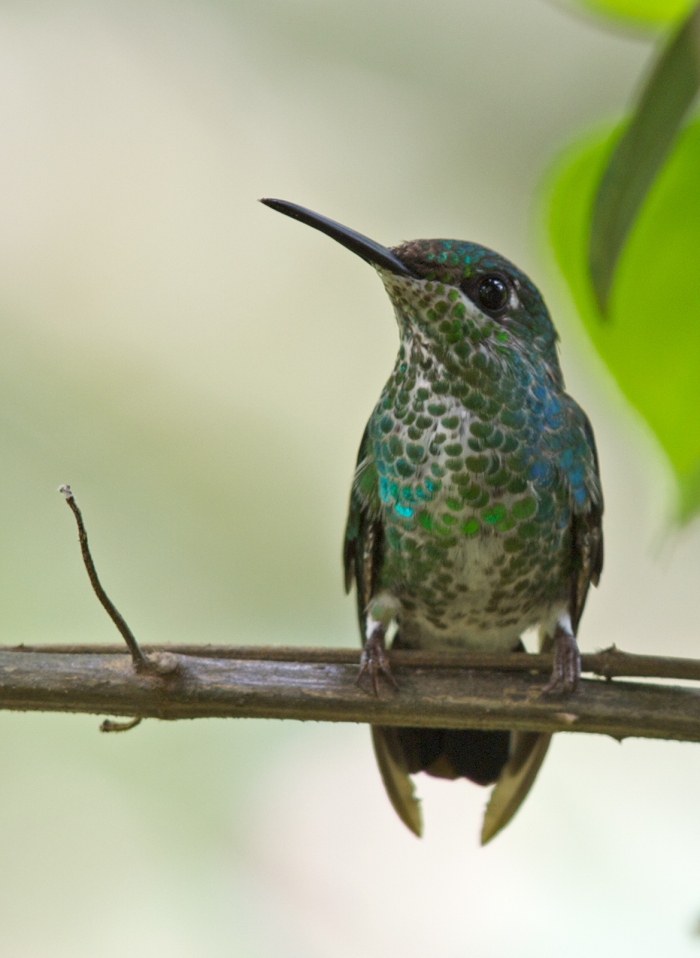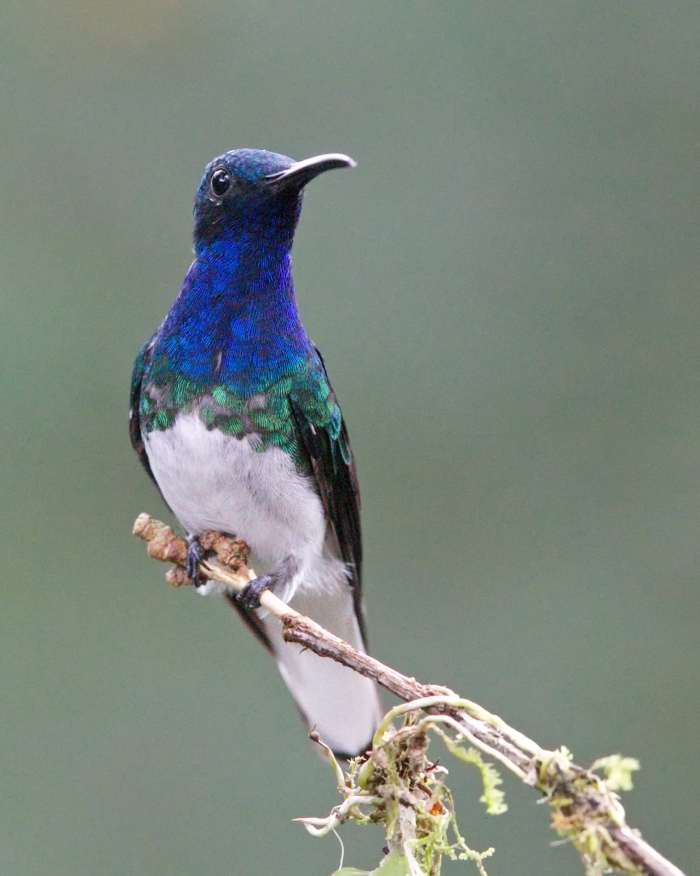Return of the Bird of the Week: White-necked Jacobin
Here’s another hummingbird that isn’t called a “hummingbird.” It’s a Jacobin, instead.

White-necked Jacobin, Tandayapa, Ecuador
The White-necked Jacobin is a strikingly beautiful hummingbird. The male has a blue, green and black which a sharply defined white belly and a white band on the back of its neck. The female has a green back and head, but the throat and chest have green spots that flash blue-green in the right light.

White-necked Jacobin Female, Tandayapa, Ecuador
This species is found in a variety of habitats, from humid forest canopies to tall second growth forests, and even in coffee and cacao plantations. It has a wide distribution, ranging from southern Mexico to Amazonian Brazil and Peru. While it is technically uncommon, it is an enthusiastic devotee of hummingbird feeders, which can make it appear more common than it is.
The name “Jacobin” comes from the French term for Dominican monk. Not from the later French revolutionaries who were so very fond of the guillotine. There is, after all, that white mark on the back of the neck. Ornithologist and author Rick Wright has it puzzled out.

White-necked Jacobin, Costa Rica
There are two subspecies described, although the second is confined to the island of Tobago.
White-necked Jacobin are uncommon to common, at least seasonally, over most of its broad range and the species appears well able to use disturbed and man-made habitats such as tree plantations. Because of the wide distribution and probable adaptation to human-altered environments, it is not believed to be threatened.
For more bird photographs, please visit Frozen Feather Images.